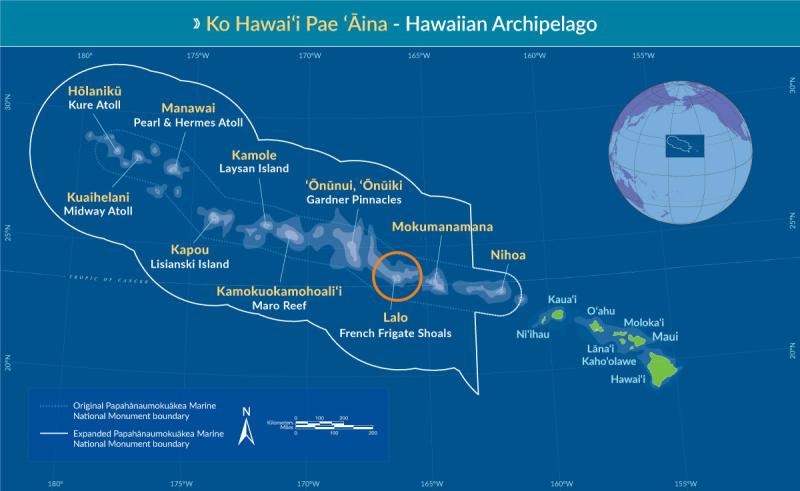On May 15, NOAA researchers on Oʻahu boarded the M/V Kahana II for Lalo (French Frigate Shoals), a remote atoll in the Papahānaumokuākea Marine National Monument. Upon arrival to Lalo, the team will set up a biological research camp to monitor Hawaiian green sea turtles and Hawaiian monk seals throughout the summer. Daily operations at the Lalo field camp will include counting and identifying seals and turtles at islands across the atoll.
Sea Turtles
This year marks the 50th anniversary of NOAA sending field researchers to Lalo to monitor honu (Hawaiian green sea turtles) that migrate there to mate and lay their eggs. Approximately 96 percent of honu from the Hawaiian archipelago use Lalo as their nesting grounds. Having a research team there during the summer nesting months is important for monitoring the entire population. This year also marks the 50th anniversary of the Endangered Species Act, and we are celebrating the protection, conservation, and recovery work—like this monitoring effort—that it guides.
During the 2023 season, the three-person honu team will share a camp with the Hawaiian Monk Seal Research Program’s four-person research team. The camp is located on Tern Island, a tiny coral islet located within Lalo. In 2018, a hurricane caused the turtles’ primary nesting habitat, East Island, to lose half its size (now the length of just three sports fields). Due to this, the honu team will be based on Tern Island. As of this year, East Island finally appears large and stable enough to support short-term camping during peak nesting weeks in June. These short trips on East Island will allow the team to collect vital data on the number of females that nest each night. Researchers have not gathered this data since the 2018 hurricane.
Hawaiian Monk Seals
Four field researchers from the Hawaiian Monk Seal Research Program will be monitoring the subpopulation on Lalo. They will provide life-saving interventions for animals at risk over the summer. While the Hawaiian monk seal population hit a new milestone with 10 consecutive years of slow-but-steady growth, there are still many threats to their survival. Seals at Lalo make up 20 percent of the population in the Papahānaumokuākea Marine National Monument. They face several unique challenges including:
- Rapid habitat loss from sea level rise
- Shark predation on weaned pups
- Entrapment in decaying Tern Island infrastructure leftover from human activities since the 1930s
The researchers deploying to Lalo will be onsite to tag this year’s cohort of new pups, survey the seal population, and address these survival threats.
Additionally, two juvenile female seals were boarded on the charter vessel on May 15 for release to their home at Lalo. Rescued by NOAA due to malnutrition in August 2022, these two seals, QQ22 (“Makoa”) and QQ26 (“Ululani”), are now approaching one year of age. They were rehabilitated over the past year at The Marine Mammal Center’s Ke Kai Ola facility on Hawai‘i Island. The Marine Mammal Center’s expert animal care team provided for the developmental, nutritional, and medical needs of these seals. Now, they can grow up to give birth to pups of their own someday. The partnership between NOAA and The Marine Mammal Center is critical to the survival of seals like Makoa and Ululani. Thank you to the U.S. Coast Guard for their support in air transport for these two seals.
The field teams are slated to return at the end of the summer. Join us in wishing them fair seas and calm water on their way into the Papahānaumokuākea Marine National Monument!





